18.05.2023
NASA, Rocket Lab Announce Coverage for Second TROPICS Launch
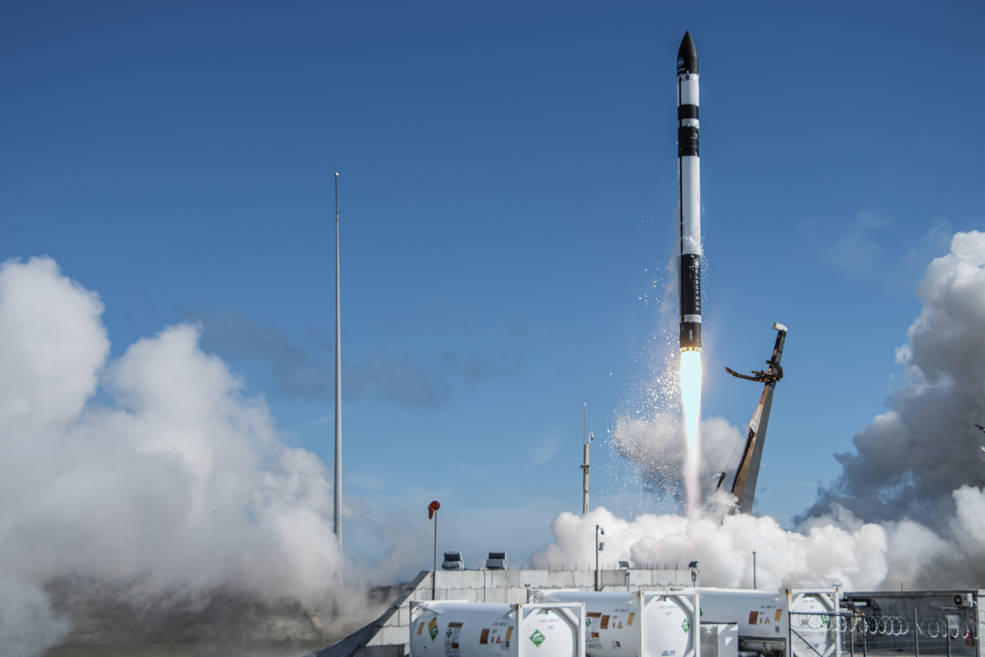
After successfully launching the first pair of small satellites earlier this month from New Zealand, NASA and Rocket Lab are now targeting no earlier than 1:30 a.m. EDT Monday, May 22 (5:30 p.m. NZST), to launch the second pair of storm tracking CubeSats into orbit.
The agency’s TROPICS (Time-Resolved Observations of Precipitation structure and storm Intensity with a Constellation of Smallsats) mission will launch aboard a Rocket Lab Electron from Launch Complex 1 Pad B in Māhia, New Zealand.
Rocket Lab will provide live coverage beginning approximately 20 minutes before launch. Coverage will air on NASA Television, the NASA app, the agency’s website, and Rocket Lab’s website.
TROPICS is a constellation of four identical CubeSats designed to observe tropical cyclones from low Earth orbit, making observations more frequently than current weather tracking satellites. Gathering data more frequently can help scientists improve weather forecasting models.
NASA will use TROPICS to study tropical cyclones as part of the agency’s Earth Venture Class missions, which select targeted science missions to fill gaps in our overarching understanding of the entire Earth system.
Full coverage of this mission is as follows (all times Eastern):
Monday, May 22
Approximately 1:15 a.m. – Live launch coverage begins
No earlier than 1:30 a.m. – Launch window opens
NASA website launch coverage
Follow countdown coverage on NASA’s launch blog for live updates beginning no earlier than 12 a.m. On demand streaming video and photos of the launch will be available shortly after liftoff on Rocket Lab’s website and Flickr. Imagery also is available on the NASA website.
The TROPICS team is led by Dr. William Blackwell at MIT’s Lincoln Laboratory in Lexington, Massachusetts, and includes researchers from NASA, the National Oceanic and Atmospheric Administration, and several universities and commercial partners. NASA’s Launch Services Program, based at the agency’s Kennedy Space Center in Florida, is managing the launch service.
Quelle: NASA
----
Update: 20.05.2023
.
Everything ‘Go’ for Second TROPICS Mission Launch
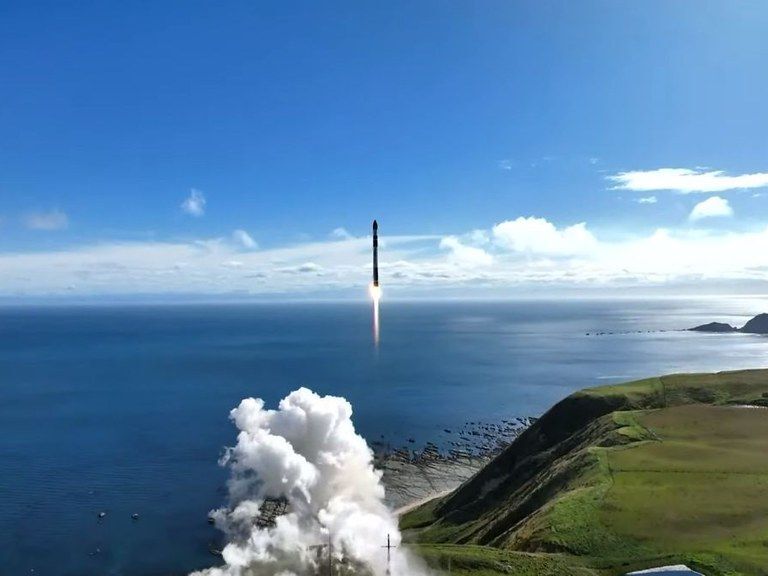
Rocket Lab moves final TROPICS mission to Friday
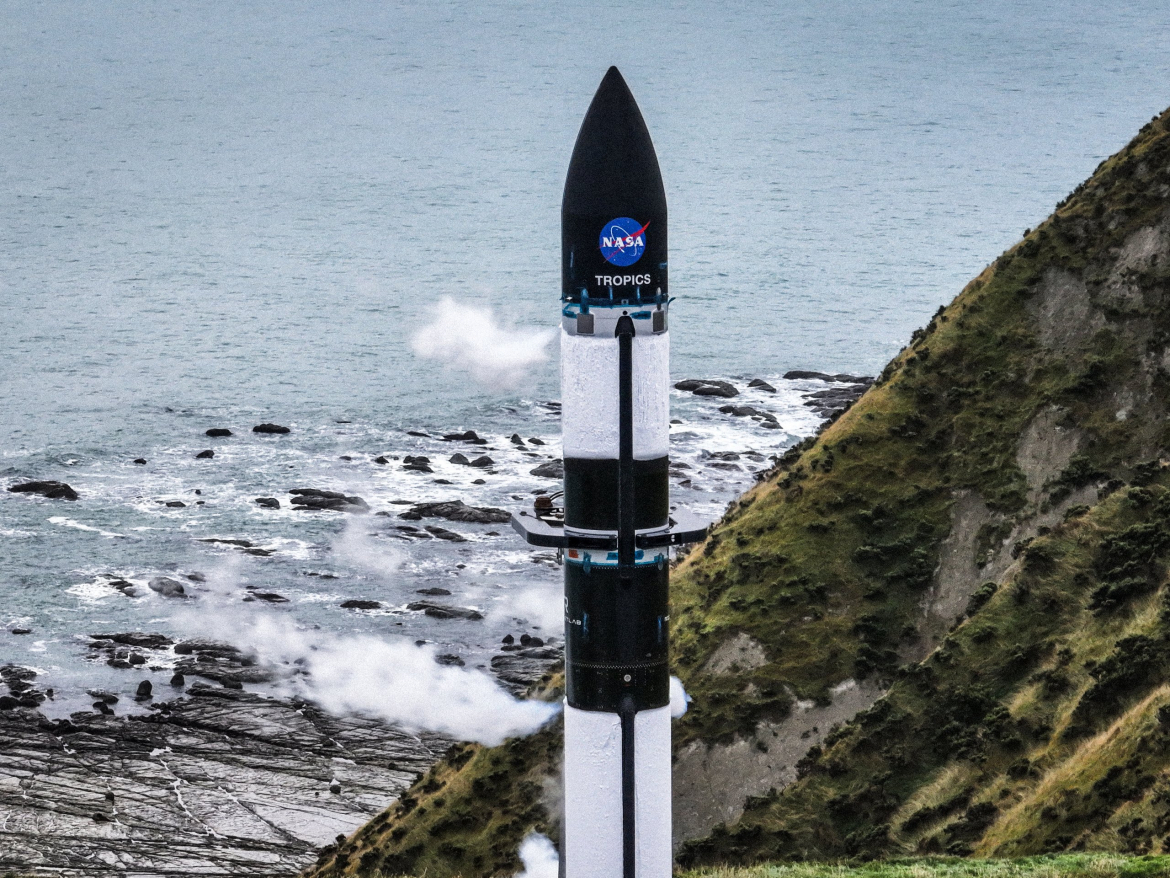
Just under three weeks after Rocket Lab launched the “Rocket Like a Hurricane” mission placing two time-resolved observations of precipitation structure and storm intensity with a constellation of smallsats (TROPICS) satellites for NASA into low Earth orbit, the company is set to launch its Electron rocket on the “Coming to a Storm Near You” mission. Launching from Launch Complex 1B (LC-1B) on the Mahia Peninsula in New Zealand, this mission will place the final batch of TROPICS satellites into orbit.
Thursday’s attempt was called off due to unacceptable weather, moving the launch to May 27 in a window that opens 03:30 UTC (15:30 local time).
NASA’s TROPICS constellation is made up of five 3U cubesats, each measuring 10 x 10 x 36 centimeters and mass just over five kilograms.
The TROPICS satellites orbit in two equally spaced orbital planes and will be able to provide hourly measurements on cyclone activity in the Atlantic and West Pacific regions and will help improve our understanding of how these storms evolve over time as well as improve intensity and direction forecasts for cyclones.
To accomplish this, each satellite is equipped with a 12-channel passive microwave spectrometer that will measure temperature, humidity, precipitation, and cloud properties.
The constellation was originally supposed to be made up of 12 satellites but was later reduced to just seven with the first launch being a pathfinder spacecraft aboard SpaceX’s Transporter-2 mission in June 2021.
After the launch of the pathfinder satellite, the first two operational satellites were launched aboard Astra’s LV0010 mission on June 12, 2022, where the company’s Rocket 3.3 was tasked with placing the two cubesats into a planned circular orbit of 550 km. However, an issue with the vehicle’s upper stage led to an early shutdown of its Aether engine, making the launch vehicle unable to reach orbit and the two satellites subsequently burned up upon reentry into the Earth’s atmosphere a short time later.
Shortly after the failure, Astra announced the retirement of the Rocket 3.3 system in favor of its more powerful Rocket 4 launch vehicle currently in development. In late September, NASA decided to move the remaining two TROPICS launches off of Rocket 3.3 and began searching for a new launch provider. On Nov. 23, NASA announced that the agency had chosen Rocket Lab to launch the remaining four cubesats over the course of two launches utilizing the company’s Electron rocket.
The remaining four cubesats need to be launched within a 60-day window of each other; due to this, Rocket Lab will conduct both TROPICS launches back to back. The first batch successfully launched on May 8 on the mission dubbed “Rocket Like a Hurricane.”
Monday’s mission, “Coming to a Storm Near You,” will see Electron lift off from Rocket Lab’s LC-1B in Mahia, New Zealand. This will be Rocket Lab’s fifth mission of 2023 and 37th overall for the company.
Electron is a two-stage liquid-fueled small satellite launch vehicle that is designed and manufactured in-house by Rocket Lab. Both of Electron’s stages run off rocket propellant 1 (RP-1) Kerosene and liquid oxygen (LOX) and the primary structure is made up of carbon fiber composite.
The first stage sports nine Rutherford engines, which were the first electric pump-fed cycle engines used on an orbital launch vehicle. Each engine produces roughly 25 kN (~5,600 lb) of thrust at sea level and increases to 26 kN (~5,800 lb) in the vacuum of space.
The second stage is powered by a single vacuum-optimized Rutherford also producing 26 kN (~5,800 lb) of thrust.
For this mission, Electron will utilize its kick stage. Powered by the company’s Curie engine, the kick stage is located inside the vehicle’s two fairing halves and allows precise deployment of payloads into a specific orbit.
During Monday’s launch, after being fully fueled with RP-1 and nearly fully loaded with LOX, Electron’s launch auto sequence will begin at T-2 minutes. At this time, the vehicle will go on internal power and the automatic flight termination system (AFTS) will be enabled. The AFTS is used to destroy the vehicle in the event of an off-nominal situation during the flight.
Shortly after the vehicle switches to internal power, LOX loading will conclude, completing propellant loading on the vehicle ahead of launch.
At T-2 seconds, Electrons nine Rutherford engines on the first stage will ignite and the vehicle will lift off the pad a couple of seconds later.
After clearing the tower, the rocket will begin to pitch over and start its gravity turn to the northeast to put the vehicle on the proper trajectory to place the satellites into the desired 32-degree inclined orbit.
Electron is expected to go supersonic one minute after liftoff and reach max-q, the period where the vehicle experience the most amount of atmospheric stress, around one minute and 11 seconds after launch.
The nine Rutherford engines on the first stage are expected to burn until around the T+2 minute and 29-second mark, at which point all the engines will shut down and stages one and two will separate four seconds later. The second stage will ignite its vacuum-optimized Rutherford a few seconds later.
Fairing separation will occur just over three minutes after liftoff and will expose the two TROPICS satellites to the vacuum of space for the first time.
Electron will then perform a battery hot-swap around T+6:52 when the second stage will jettison two of its batteries used to spin the pumps on the engine and swap over to another charged battery pair. Doing this allows the vehicle to discard unnecessary mass that would reduce performance if it was to remain attached to the second stage.
Stage two will shut down around nine and a half minutes after launch with the kick stage separating a few seconds later. At this point, the vehicle and payloads will be in an initial parking orbit and will coast for ~21.5 minutes up to the highest point in its orbit, also known as apogee.
Once at apogee, the Curie engine will ignite on the kick stage for an approximate two-minute and forty-second burn to bring the vehicle into a circular orbit of 550 km.
Shortly after Curie engine cutoff, the two TROPICS satellites will deploy from the payload plate onboard the kick stage.
After deployment, both cubesats will deploy their solar arrays and undergo initial checkouts before beginning their jobs as part of the constellation. With this launch, the TROPICS constellation will be officially complete and ready to support data gathering on cyclones in the Atlantic and West Pacific regions.
Quelle: NSF
+++
Update:
Rocket Lab 'Coming to a Storm Near You' Launch
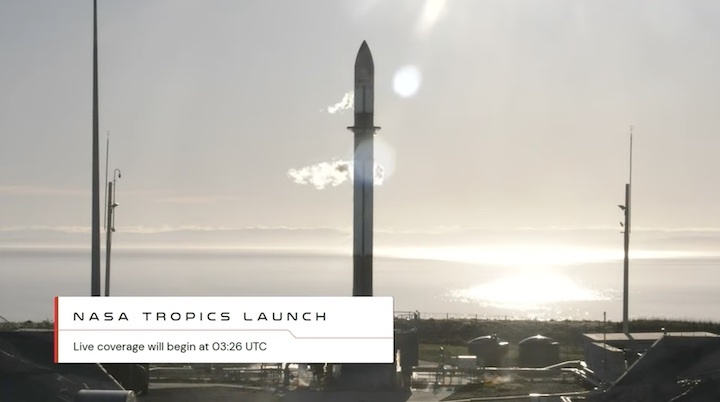
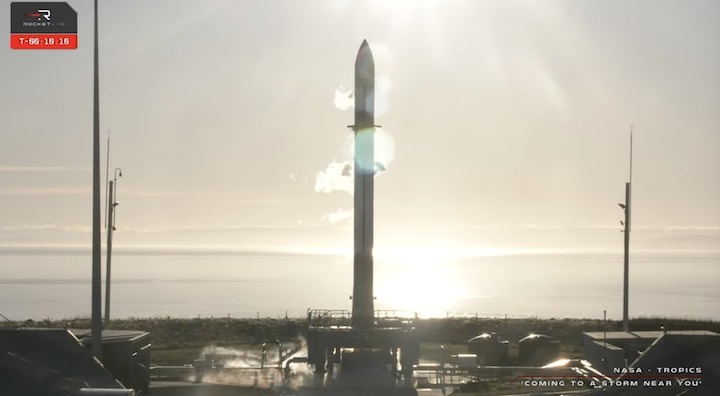
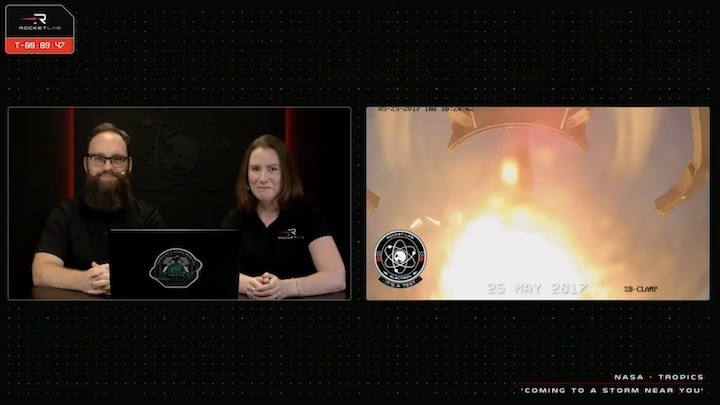
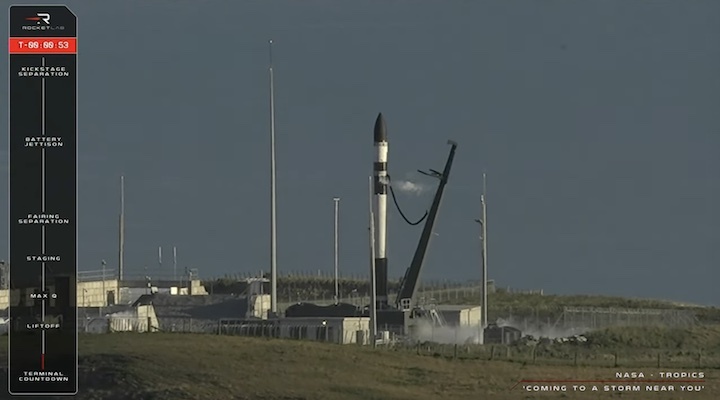
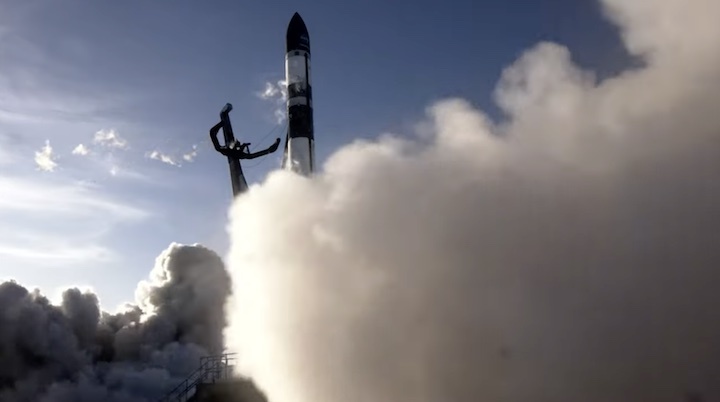

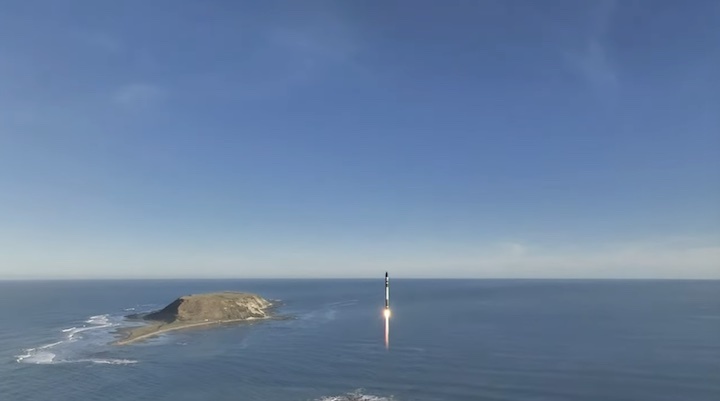
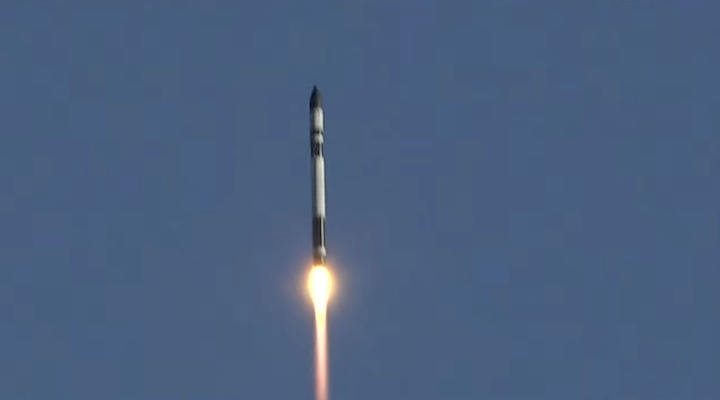
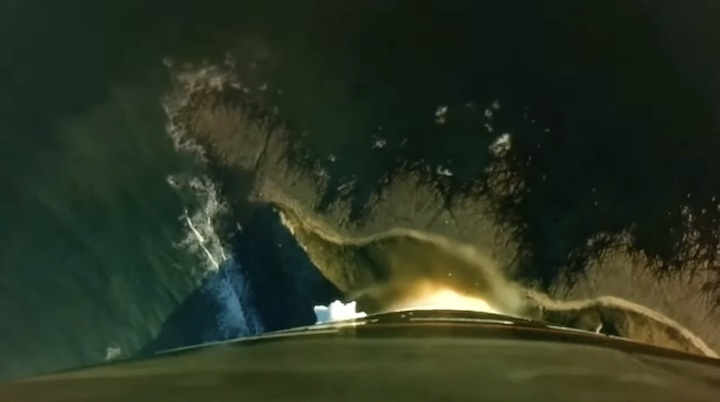
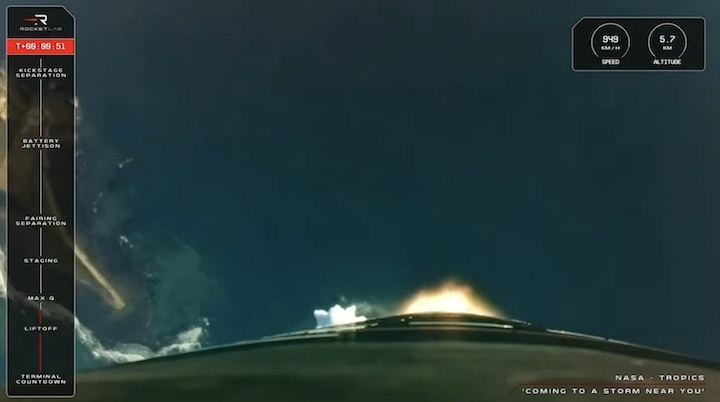
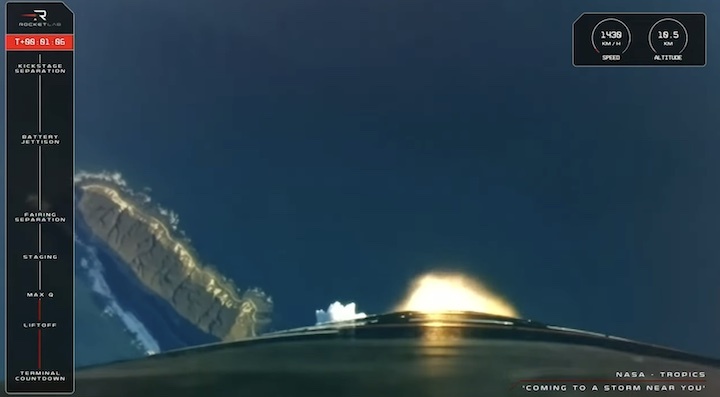
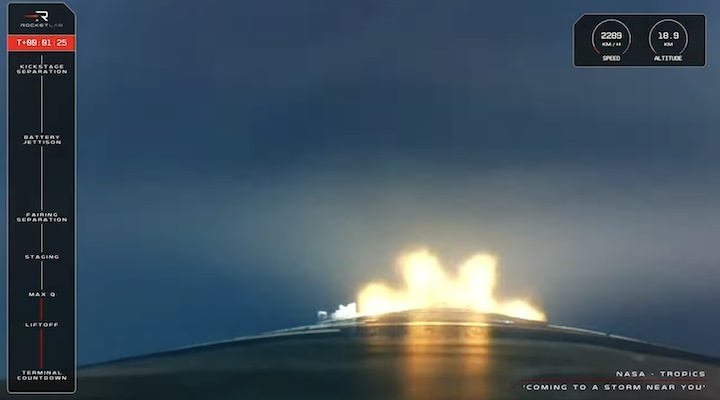
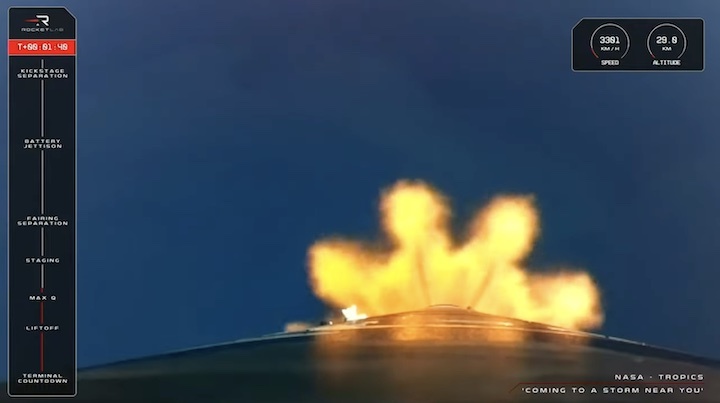
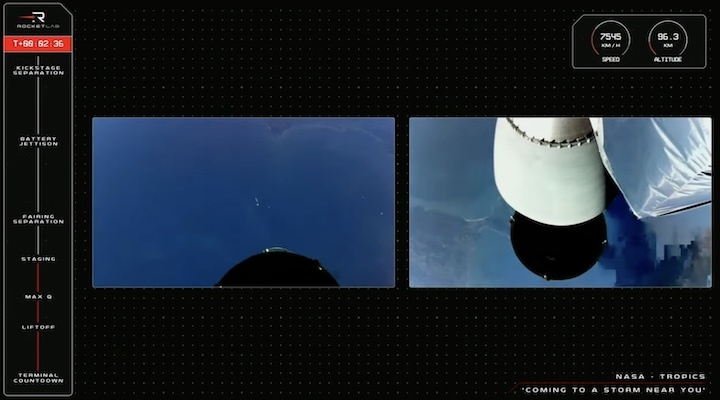
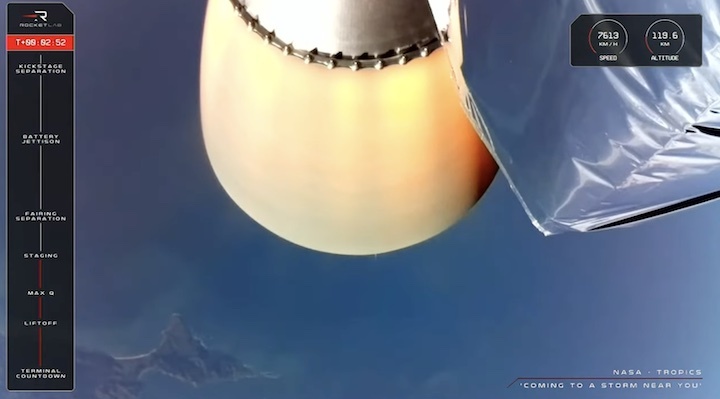
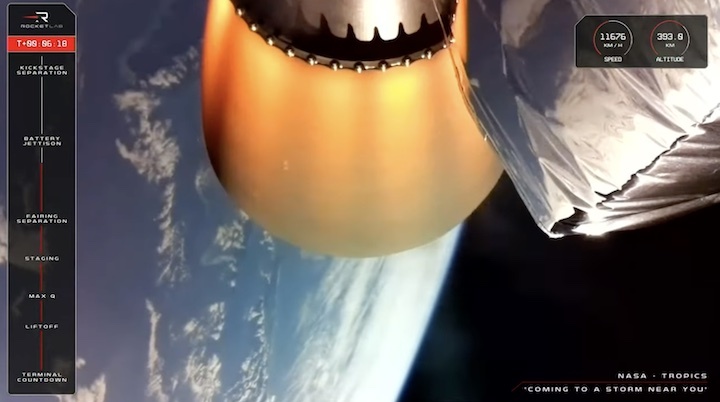
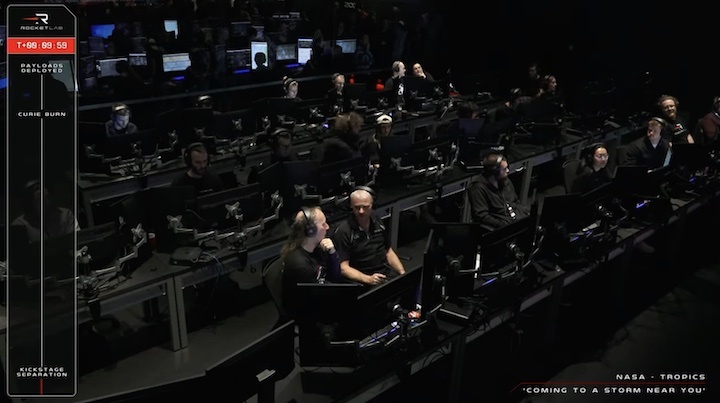
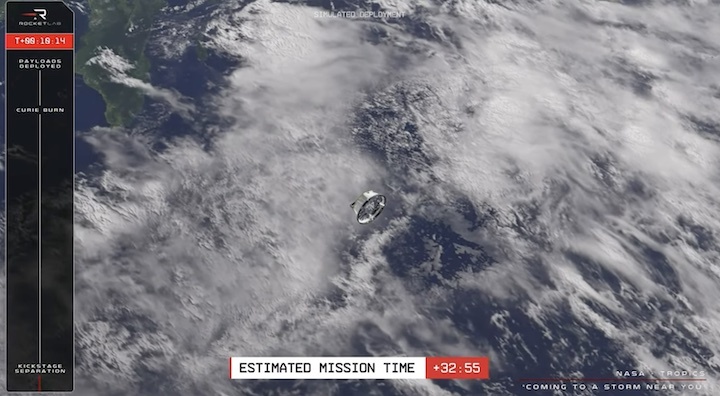
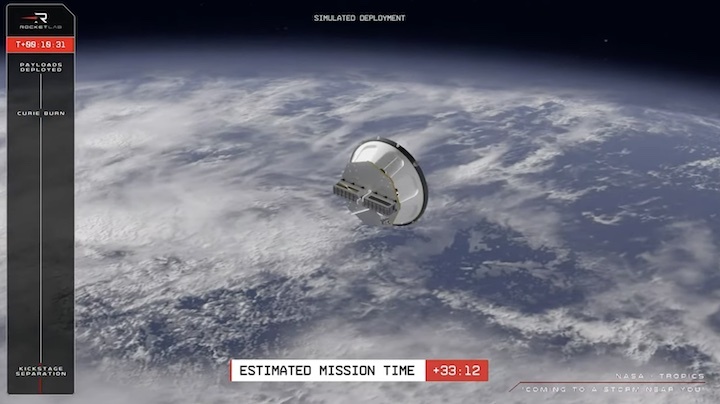
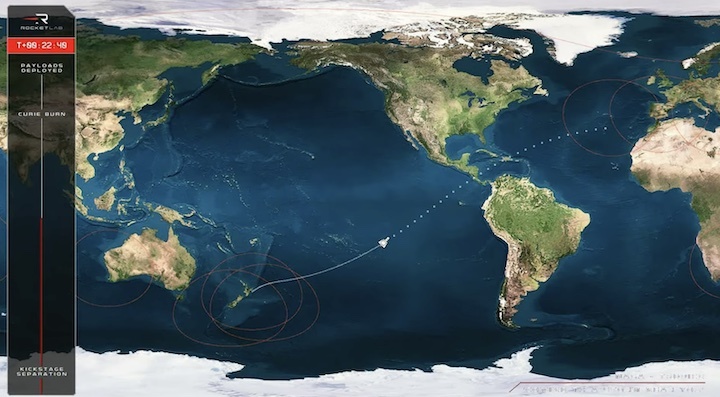
Quelle: RocketLab
